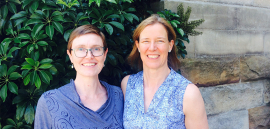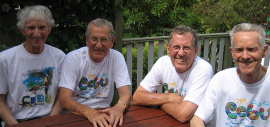Blog: The Brain Dialogues, filtered by tag: Oats Online
A Thing or Two About Twins
HEIDI DOUGLASS | h.douglass@unsw.edu.au
Throughout history, twins have been a source of fascination and wonder – particularly the unique bond they share compared to other sibling relationships.
Jan Rumery with her twin brother, John Day
For academics, twins provide an invaluable source of information, because the similarity in their genetic code allows researchers to pull apart and examine genetic and environmental influences. Twin studies have been influential in the discovery and treatment of diseases and disorders.
Researchers in CHeBA’s Older Australian Twins Study have delved into… Read More
Findings from the Older Australian Twins Study
HEIDI DOUGLASS | h.douglass@unsw.edu.au
Established by CHeBA staff in 2007, the Older Australian Twin Study (OATS) is the largest and longest running Australian research study of its kind investigating healthy brain ageing. By studying older twins (aged 65+ years) over time, OATS allows researchers to investigate the complex interactions between multiple genetic and environmental factors which cause brain diseases. Over the last decade, OATS has generated over 32 published papers and contributed to 8 international consortia, providing valuable insights into healthy brain ageing and age-… Read More
Doubling the Data Through Twins Research
KATE CROSBIE and HEIDI DOUGLASS | h.douglass@unsw.edu.au
For John Stapleton, the best thing about being a twin was never being bullied at school: “There were always two of us to fight”. For Terry Stapleton, it’s the “stronger bond” between twins; that, and meeting John for a beer most Fridays at The Oaks in Neutral Bay. Both twins maintain a physically and mentally active life, but in different ways. These differences, as well as their similarities, are helping CHeBA researchers understand the role of genetic and environmental factors in cognition and healthy ageing.
John and Terry… Read More



